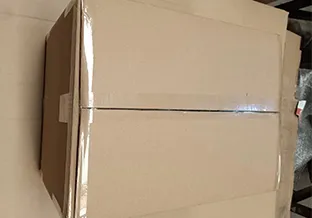
resurfacing cast iron skillet
Resurfacing a Cast Iron Skillet A Step-by-Step Guide
Cast iron skillets are celebrated for their durability, heat retention, and ability to enhance the flavors of the food cooked in them. Over time, however, the cooking surface of a cast iron skillet can become rough or rusted, requiring resurfacing to restore its functionality and appearance. Resurfacing a cast iron skillet can seem daunting, but with the right techniques and care, it can be done effectively. This article will guide you through the steps to resurface your beloved skillet.
Understanding the Need for Resurfacing
Before diving into the resurfacing process, it’s important to understand why you might need to do this. A cast iron skillet may become damaged due to rust, food buildup, or the deterioration of its seasoning layer. If your skillet has substantial rust, an uneven surface, or has lost its non-stick properties, resurfacing will not only restore its surface but also prolong its lifespan.
Materials Required
To successfully resurface your cast iron skillet, you will need
- Steel wool or a scrubbing pad - A mild dish soap - Water - A towel or paper towels - Cooking oil (vegetable oil, flaxseed oil, or shortening) - An oven (for seasoning) - Optional a palm sander (for heavy rust or pitting)
Step-by-Step Resurfacing Process
resurfacing cast iron skillet

1. Cleaning the Skillet Start by thoroughly cleaning your skillet. Using steel wool or a heavy scrubbing pad, scrub the entire surface to remove any rust, old seasoning, and food particles. If the skillet is heavily rusted, consider using a palm sander for a more aggressive approach. Once you’ve cleaned the skillet, rinse it under warm water and use a mild dish soap. Although soap is not usually recommended for cleaning well-seasoned skillets, this step is acceptable when resurfacing.
2. Drying After cleaning, dry your skillet thoroughly. Cast iron is prone to rusting when damp, so it’s critical to ensure there is no moisture left. Use a towel or paper towels to wipe it down.
3. Applying the Oil Once dried, apply a thin layer of cooking oil to the surface of the skillet. Use a paper towel to spread the oil evenly, covering the interior and exterior surfaces. The oil will help to create a new seasoning layer, which provides that iconic non-stick quality.
4. Seasoning the Skillet Preheat your oven to around 450°F (232°C). Place the skillet upside down in the oven to prevent any oil from pooling and creating sticky spots. After an hour of baking, turn off the oven and let the skillet cool down inside the oven for a few hours.
5. Repeat as Necessary For optimal seasoning, you may want to repeat the oiling and baking process several times. This will build up layers of seasoning, enhancing the skillet's cooking surface and improving its non-stick properties.
Conclusion
Resurfacing a cast iron skillet is a rewarding process that can breathe new life into your cooking tool. With just a few simple steps, you can remove rust, restore its surface, and build a durable seasoning layer that enhances the flavor of your meals. Regular maintenance and proper care will help ensure your cast iron skillet lasts for generations, becoming a cherished part of your kitchen toolkit. As you enjoy the fruits of your labor, remember that the key to longevity in cast iron cookware lies in consistent seasoning and careful cleaning practices, allowing you to cook with confidence and style.
-
Season Cast Iron Perfectly with GPT-4 Turbo TipsNewsAug.01,2025
-
High Quality Cast Iron Cookware - Baixiang County Zhongda MachineryNewsAug.01,2025
-
Premium Cast Iron Pan: Durable & Perfect HeatNewsAug.01,2025
-
High Quality Kitchen Durable Black Round Cast Iron Cookware Pancake Crepe Pan-Baixiang County Zhongda Machinery Manufacturing Co., Ltd.NewsAug.01,2025
-
Cast Iron Cookware - Baixiang County Zhongda Machinery | Nonstick, Heat ResistanceNewsAug.01,2025
-
High Quality Kitchen Durable Black Round Cast Iron Cookware - Baixiang County Zhongda Machinery | Non-Stick, Heat Retention, DurableNewsJul.31,2025


